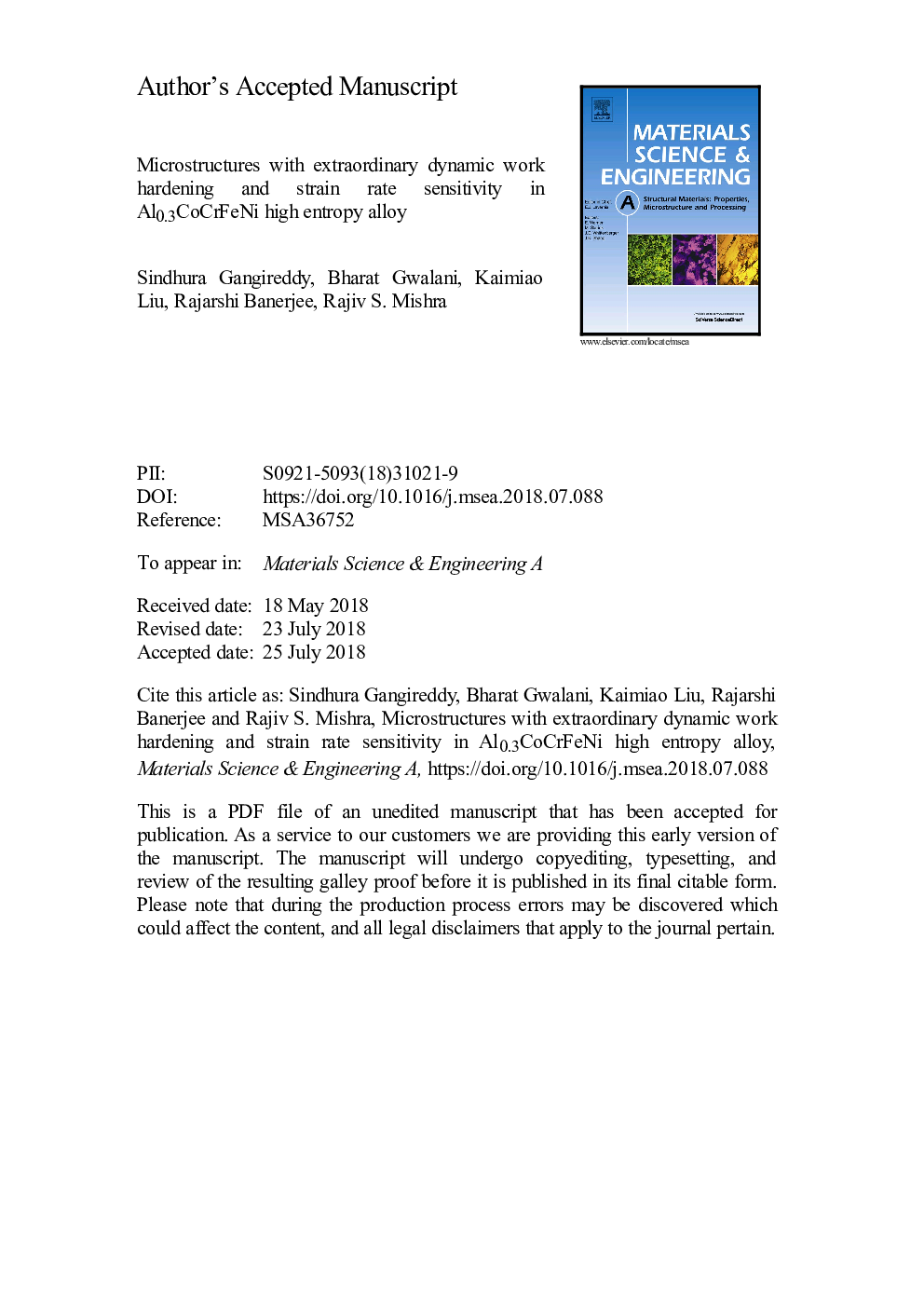| Article ID | Journal | Published Year | Pages | File Type |
|---|---|---|---|---|
| 7971543 | Materials Science and Engineering: A | 2018 | 17 Pages |
Abstract
Al0.3CoCrFeNi is an FCC-based high entropy alloy (HEA) that can display a wide spectrum of mechanical properties. Cold work and precipitation are good strengthening mechanisms in this HEA, and their effect on dynamic work hardening and strain rate sensitivity (SRS) was investigated. Dynamic deformation testing using split-Hopkinson pressure bar (SHPB) at 2â¯Ãâ¯103 sâ1 and quasistatic tensile deformation at 10â3 sâ1 were conducted on thermomechanically processed conditions. The HEA behaved like a conventional FCC alloy with higher flow tresses and work hardening in the dynamic regime. All the conditions showed substantial dynamic work hardening due to the low stacking fault energy (SFE) of the HEA. Precipitates enhanced twinning, as observed from post-SHPB deformed microstructures, and resulted in an extraordinary work hardening rate >â¯2200â¯MPa. Cold work introduced large-scale deformation twins and these suppressed further twin nucleation during testing, and a lower work hardening of 1000â¯MPa was observed. SRS was highly microstructure-sensitive and varied from an exceptional mâ¯=â¯0.063 in the cast condition, where the biggest flow stress contributor is solute strengthening of short-range nature and can be thermally activated. Introduction of long-range athermal incoherent precipitates reduced SRS slightly. Cold work, which introduces much higher density of athermal defects, dislocations and large-scale deformation twins, drastically reduced SRS to mâ¯=â¯0.006. Upon annealing the rolled material, partial recovery of cold work and precipitation occurred together and coupled to result in a moderate SRS, m=â¯0.02.
Related Topics
Physical Sciences and Engineering
Materials Science
Materials Science (General)
Authors
Sindhura Gangireddy, Bharat Gwalani, Kaimiao Liu, Rajarshi Banerjee, Rajiv S. Mishra,
